Will Design Save Tehran?
Speculative Design has been considered a serious practice of design for many years and it is increasingly recognized as a mainstream field of contemporary design. In speculative design, the practitioners often consider multiple futures while not necessarily aiming to solve today or future problems. The priority is to represent different futures and tell their stories for criticism, storytelling, raising awareness, provocation, etc.
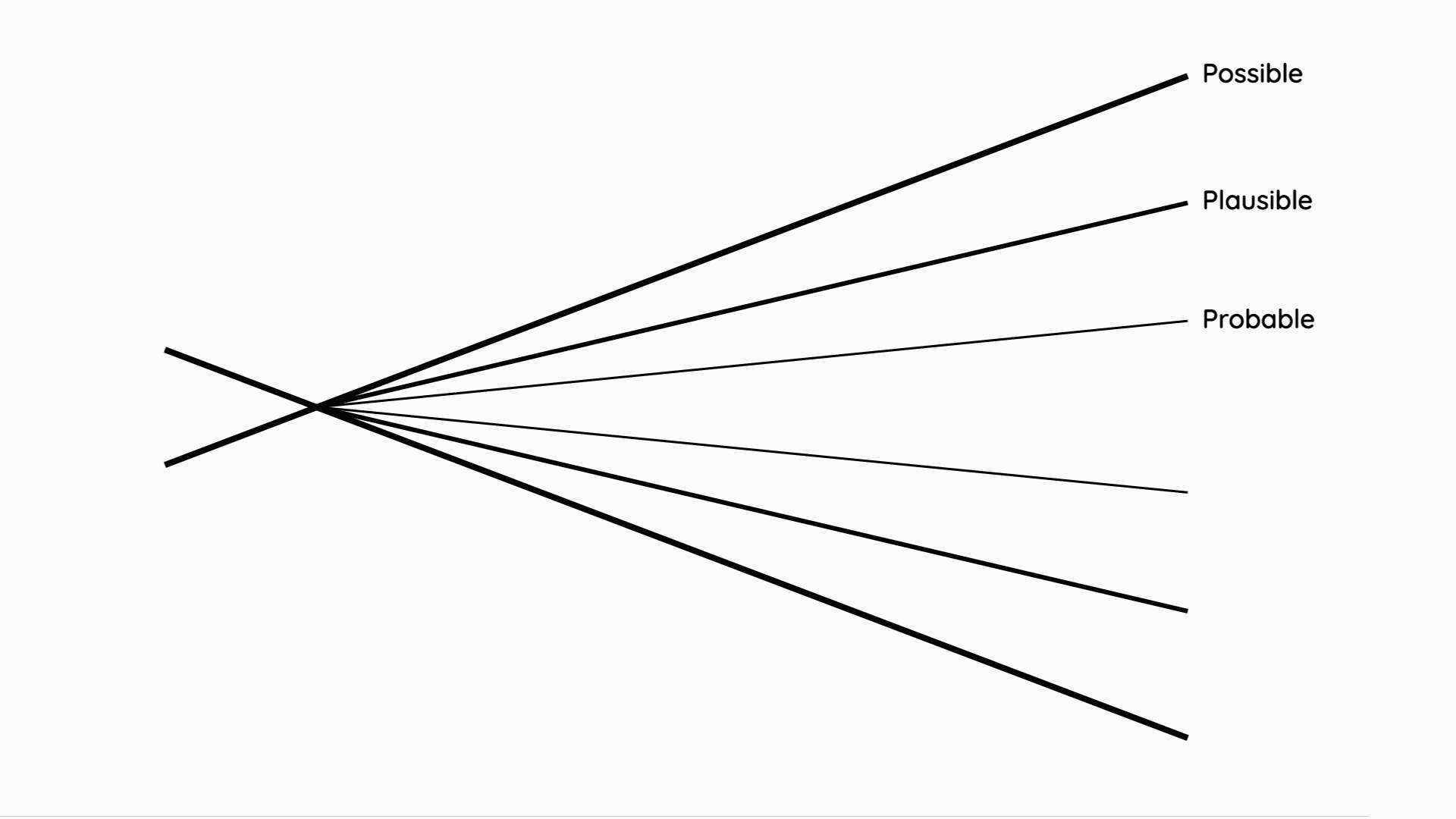
In this regard, the outcomes of the Workshop “Will Design Save Tehran?” have to be seen and read as speculative designs. The purpose of these projects was not to solve the present or even future problems of Tehran but to address current problems and trends. These projects were primarily exercises of innovative design methods combined with futures studies’ principles and methods. Projects have sought to narrate situations that could occur in the future. Recognition of such situations, while seemingly useless at first glance, can significantly affect our current discourse and the way we approach today’s problems.
The method used in this workshop is a combination of conventional methods of futures studies and design. In this method, we first tried to conceive the situations in which life becomes unbearably difficult and challenging in Tehran (almost-apocalyptic scenarios), and the city is on the verge of collapse. We set a horizon for this exercise: 2070 (around 1450, Persian calendar). These stories illustrate Tehran’s undesirable scenarios. After this step, each group of participants selected one of these unpleasant scenarios, and by using the “Backcasting Method” in ten-year intervals, they tried to imagine and map the sequence of events leading to the adverse scenario. Next, participants identified the most sensitive point in time that could change the direction of future events and used it as their design situation. Then, participants entered the design phase.
By utilizing a variety of design methods and techniques, like “Design Thinking,” they proceed to ideation, prototyping, and testing their prototypes through “Role-Playing.” In the end, participants selected the media that best suit their projects and presented projects through those media. The following outcomes are made possible by workshop participants under the instructors’ guide in approximately 50 hours.


Instructors

Kasra Ghavidel
Strategic and Graphic Designer | Studio Shizaru

Sepehr Salehi
Architect and Visual Design Specialist | Hadi Tehrani Architects

Pouyan Bizeh
Speculative Design Specialist | Future City Innovation Lab

Mahan Mehrvarz
Innovation strategist and Manager | Future City Innovation Lab

Kasra Ghavidel
Strategic and Graphic Designer | Studio Shizaru

Sepehr Salehi
Architect and Visual Design Specialist | Hadi Tehrani Architects

Pouyan Bizeh
Speculative Design Specialist | Future City Innovation Lab

Mahan Mehrvarz
Innovation strategist and Manager | Future City Innovation Lab
1. SAMAB: Tehran Water Management System
SAMAB (Tehran Water Management System) is designed in 2038 based on the idea of individual-citizen-based water consumption. By knowing the amount of water consumed and paying for it individually, each person will have more control over one’s daily water consumption regardless of where they use it, and consequently, be aware of the cost they pay daily or monthly for water. Besides, related organizations can monitor more accurately the possible misuse and water-hoarding in domestic tanks.
It should be noted that the individual’s consumption has no restrictions or limitations, and the water will be easily accessible by paying the cost. The “Drop Meter”, which is a water meter installed on all water outlets, is capable of being connected to all water tap models for central water consumption monitoring and control purposes. Each person will be identified by a built-in camera. In addition to identifying people’s faces, the gadget measures the amount of water consumed and sends it to the central database. A second control valve allows users to minimize the consumption of water. Anyone over the age of five must sign up in the system, get services such as a drop meter repair service, and sign up for their online water payment in the Samab app.
The “Tehran Water Authority” provides this service to all citizens of Tehran. In case of disruption of the device or mismatch, the relative outlet will be cut off from the grid, and a water service notice will be sent to the offender. In addition to the compensation, the repair will require a fee.
Design and Development: Alireza Kalantari, Banafshe Javan, Mahsa Hazbi, Samin Eshraqi
2 . JEEM: Job Experience Exchange Media
The issue in the year 2032 is the existence of an unequal social evaluation among citizens of Tehran based on their jobs. It has created the potential for a considerable class division between citizens and shifts to a “Bipolar” society of “ordinary and special people.” Over-valuing the specialists, including medical doctors, engineers, technologists, etc., and the status of these experts in society, has marginalized the employment cycle and crippled the social system.
The proposed solution to normalize inter-class relations and reform the existing evaluation system is a platform called JEEM (Job Experience Exchange Media), which could enhance transparency and create equal opportunities for different segments of the society. Everyone with any occupation can subscribe to the platform and share a 24/7 on-demand stream of their business day using the JEEM app.
The system uses tax deduction as a tool to attract people to participate in the program. Each person, after joining JEEM, must inform the platform about certain information, including job experience, education, monthly income, etc. and also let the platform capture their health situation including heartbeat and level of stress while doing their job. Employees can benefit from the tax exemption by presenting their business, as the number of visitors increases, and their satisfaction with each stream rises, the percentage of tax exemption is determined.
The target audience of this platform is teenagers, mainly ages 10 to 15. The goal of the government is to familiarize the audience with different types of jobs, education, income, and the importance of each job. Through this platform, the government aims to create mentorship for marginalized teenagers.
After signing up, employees are committed to providing streaming information along with other information at all hours of the day, through the request of visitors, using a gadget designed by JEEM.
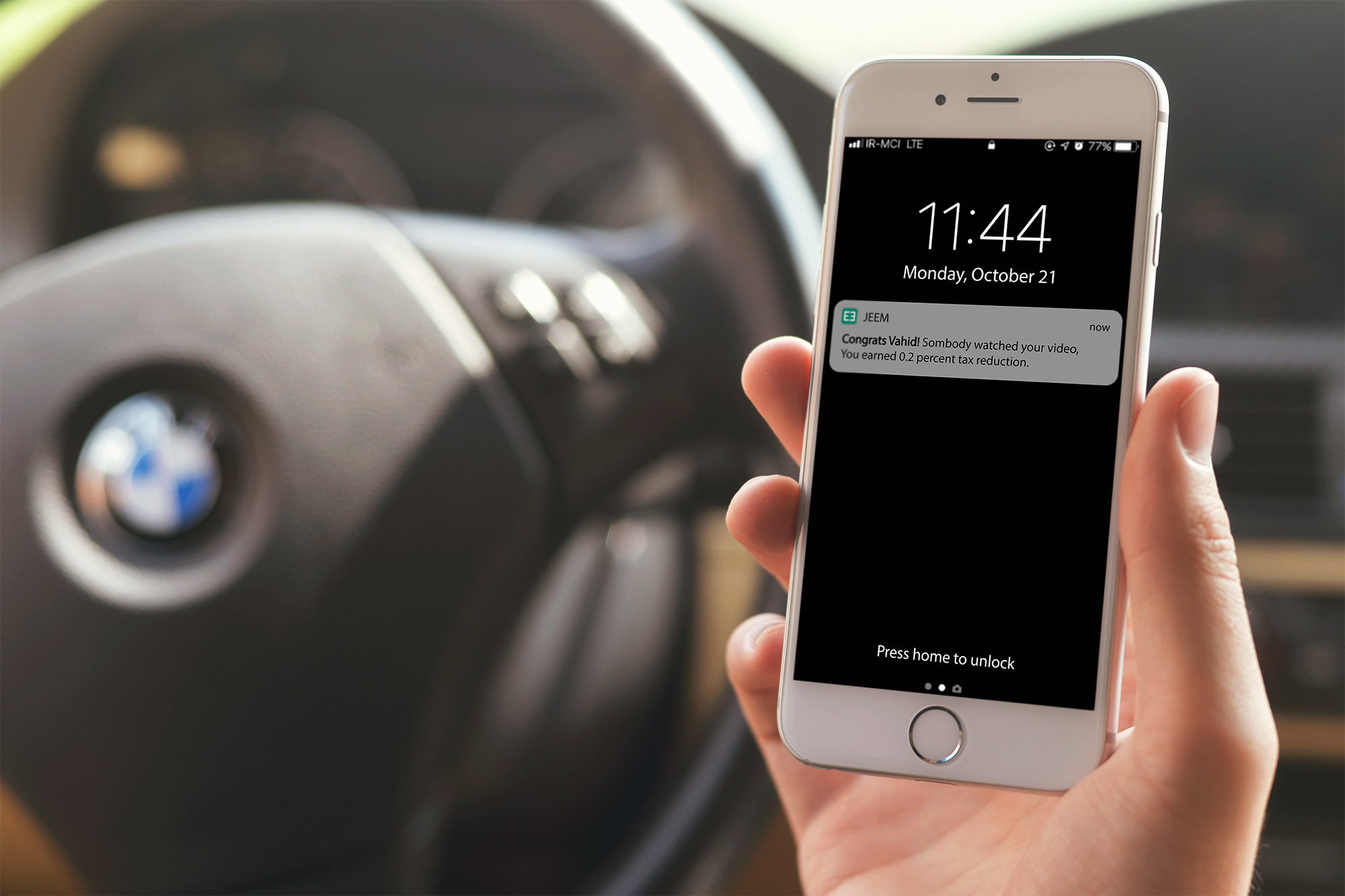
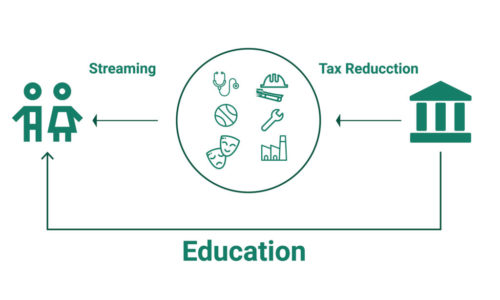
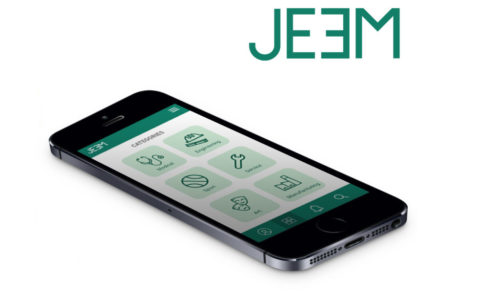
Design and Development: Anisa Motahhar, Nava Kholoosi, Sheyda Hashempour
3 . FCU: Fly Catcher Unit
Many experts believe that “Biotech” will become an alternative to information and communication technology. Extensive public and private supports and funds for biotechnology laboratories have led to the expansion of these labs in Tehran. Meanwhile, negligence and mishandling of the sample species led to the spread of mutated insects into the urban environment. Over the years, these insects evolved into even more threatening species and they have become a severe problem for the city.
The approaches to solving the insect problem in Tehran have all been unsuccessful until the year 2050. So far, a startup team, in collaboration with the Henran Poultry Industries can produce flying harvester machines to reduce and control the population of insects in Tehran. This unit is casually called FCU among its developers. It collects insects by using optical traps (light) carried by drones. It then traps them by using a starch-based glue (also for food enhancement purposes). Finally, the output is compressed and sent to the poultry farms of the company to supply nutrition. As a result, the needed chicken meat is produced in this cycle.
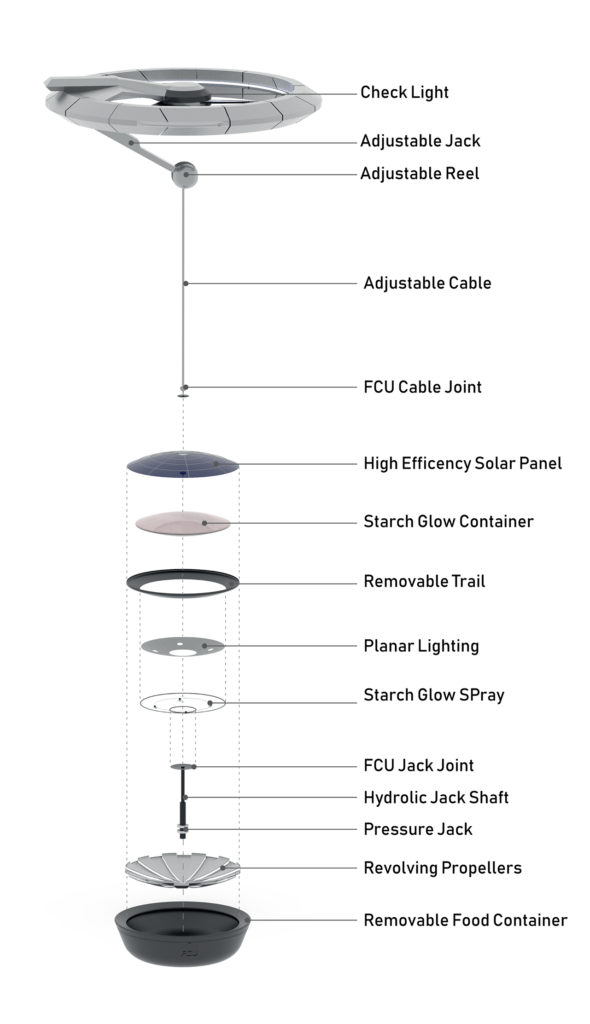
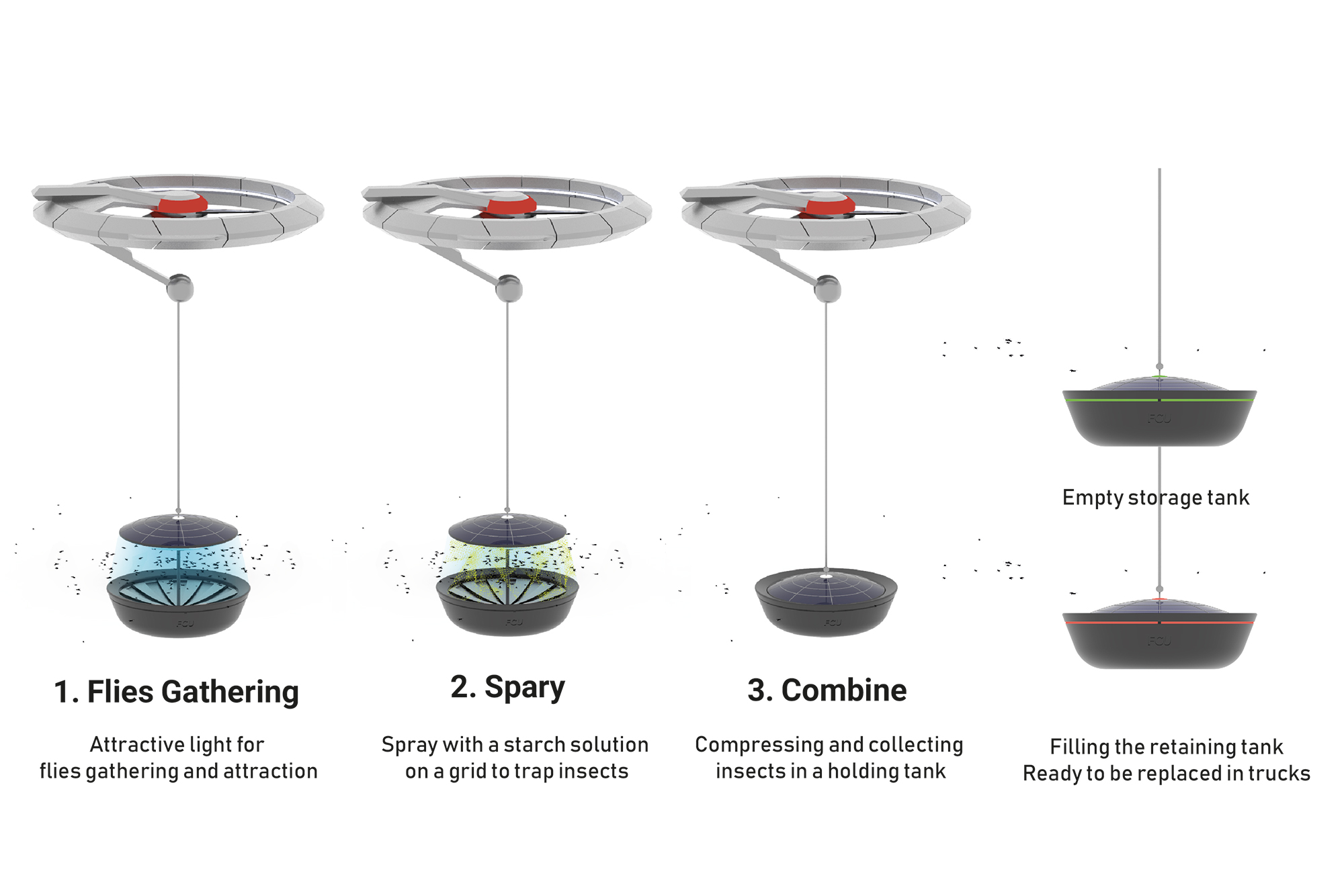
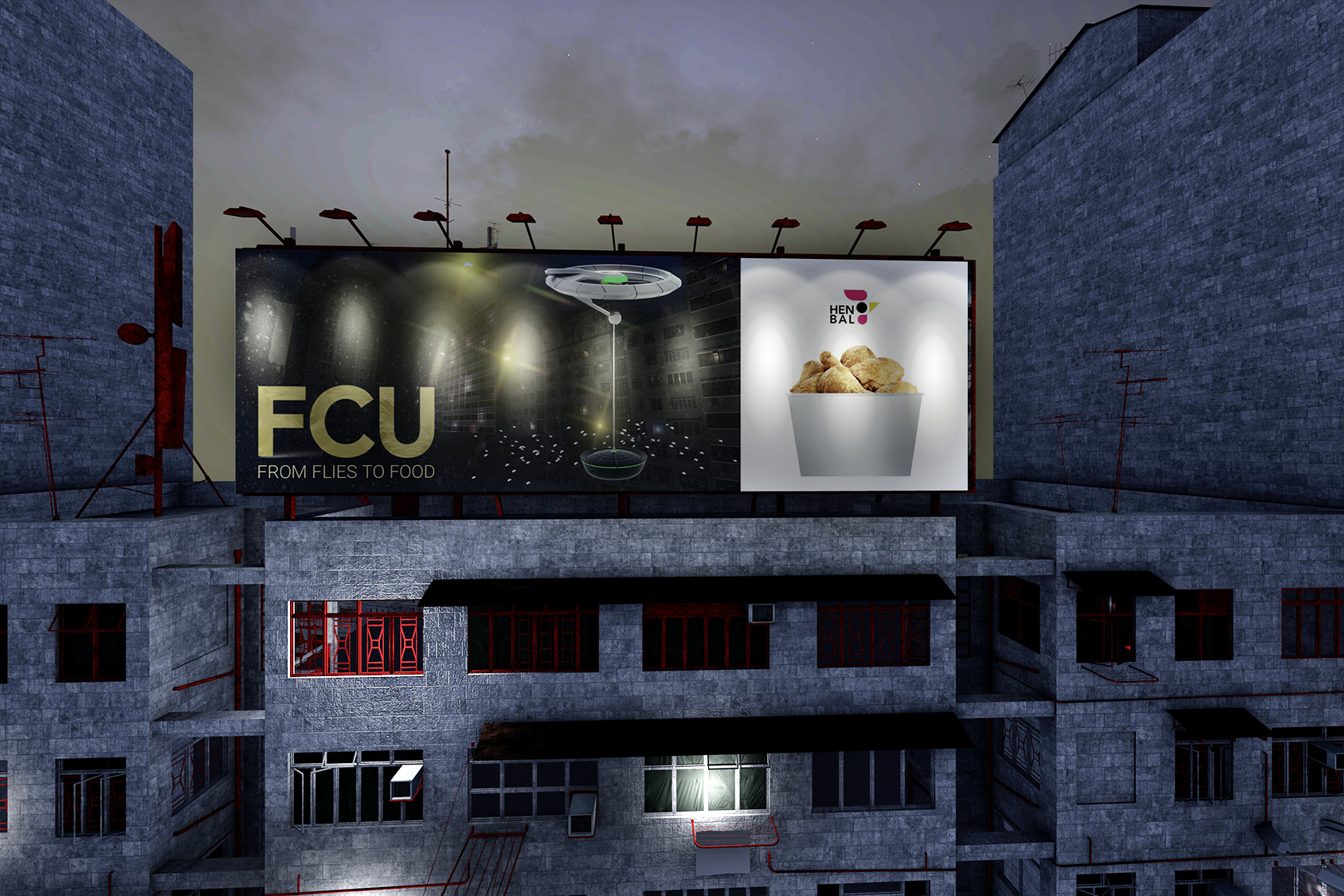
Design and Development: Nima Ghanei, Reyhaneh Zandian


